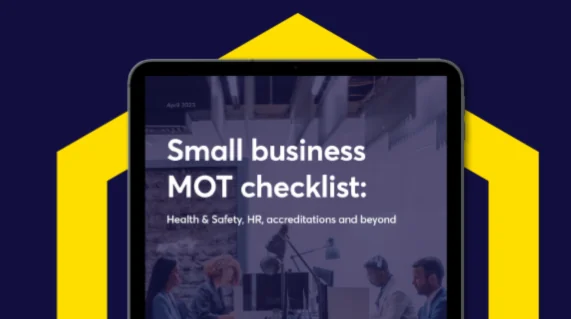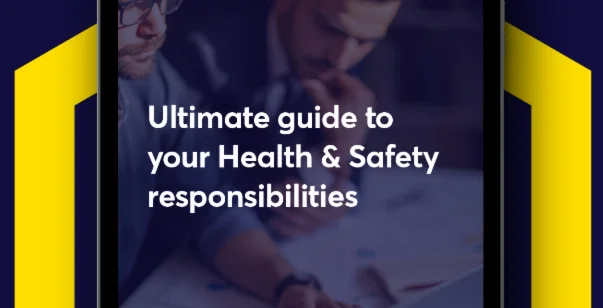Subcontractors
Subcontractors provide an excellent labour and skill solution for many industries; supplying capability and / or expertise to a main contractor who does not possess it in house. The flexibility afforded by subcontractors allows businesses in unpredictable sectors flourish.
However, there are drawbacks when taking on a subcontractor, which arise mainly from the fact that they are not an integral part of your organisation, and therefore the level of control you have over a subcontractor is limited.
It is therefore vital that proper processes are followed when taking on a subcontractor.
This guide sets out recommended best practice for the selection and employment of subcontractors. Although this guide is predominantly aimed at the construction industry (and draws upon the experience and regulation of that industry) the principals will apply to any other industry and adherence to them will protect the interests of you, your clients and other parties.
1. Assessing your Subcontractors
Subcontractors carry out work on your behalf, and therefore in your name. Accordingly it is essential that they are capable of carrying out the work to a satisfactory standard in a professional and safe manner.
You should therefore ensure that you have taken reasonable steps to assess whether or not the subcontractor is able to do the job you need them to.
An appropriate pre-approval process is the best way of carrying out the necessary checks. This should be designed according to the nature of the work the subcontractor will be doing. An overly burdensome process for a small, low risk, low cost job may deter a lot of potential contractors and therefore mean that you may miss out on the best value option. Conversely, an assessment which is not rigorous enough on a large, high risk and high profile project can lead to the use of an incompetent subcontractor resulting in great expense, inconvenience, and damage to your reputation.
You should treat your subcontractor recruitment process in the same way as you would when recruiting employees. A ‘job description’ for the work will help define the competencies you should demand of potential contractors, which can be expressed in the same way you would a ‘person specification’ with essential and desirable requirements.
What sort of information and evidence should you require?
References or examples of previous work
It should be a pre-requisite that these can be followed up on and validated.
Insurance
These would normally involve all or some of public liability, employee liability and professional indemnity insurance.
Health and Safety policies and procedures
This is essential for high risk industries such as construction and manufacturing. This would normally include a health and safety policy, example risk assessments and method statements and accident records. Membership of an industry recognised health and safety scheme can be provided as an alternative requirement, for example CHAS or Safe Contractor.
Industry specific qualifications and certifications
These will often be trade body accreditations, for example, the Microgeneration Certification Scheme.
Training records
Evidence that the contractor’s workforce holds relevant qualifications or has received appropriate training; for example, CSCS cards or asbestos awareness training.
Equal opportunities policy
All companies should operate an equal opportunities policy and it will be especially vital where the client is a public body or public private organisation.
Corporate Social Responsibility related policies
These may include an environmental policy or targeted recruitment policies
Proof of financial stability
For example, a copy of the last three years accounts or profit and loss / balance sheets.
What should you do with the information collected?
Avoid treating the process as a box ticking exercise. The information should be reviewed and a contractor should only be approved if you are satisfied they are competent. If a contractor falls short on one or two requirements then alert them to this and give them the opportunity to rectify any issues. This will have positive repercussions for not only you, but the contractor as well as they are more likely to get work from you and other clients.
The evidence should be kept on file. Notes should be made of time limited documentation so that you are reminded to check they have been renewed or updated at the appropriate time.
2. Employment status
If you are taking on an individual subcontractor, especially if they are labour only, then you should take great care to ensure that they are not being engaged in a way which would cause HMRC or an Employment Tribunal to consider that they are an employee
Simply stating in writing somehow that the person is a subcontractor is not sufficient as his/her employment status is a question of fact. Therefore it is important that any contract is consistent with self employment and the relationship is managed consistently with that contract.
The following points and myths should be borne in mind when managing subcontractors:
Insurance
Just because a contractor has his/her own public liability insurance in place does not mean they are automatically self employed and in fact this is a factor HMRC would give little weight to when assessing employment status.
Invoices and payment
Again, getting invoices from your subcontractors does not mean they are not an employee. HMRC or the Employment Tribunal would be more interested in how payment is instead calculated (hourly/day rates are more indicative of employment than price work).
Substitute workers
If a subcontractor has the right to send a substitute worker and there is no evidence that right has ever been denied in practice then it will be difficult for HMRC to argue that person is an employee as they do not have to do the work personally.
Length of engagement
A subcontractor could be deemed to be an employee even if they just worked for you one day every so often, rather it depends on the nature of the relationship during that engagement. It could be the case that a subcontractor is self employed on one job they do for you but an employee on another.
3. Formal contracts
No matter the size or nature of the work to be carried out by the subcontractor it is important to ensure that the details of the contract are clear and properly recorded.
It is recommended that the fundamental contractual terms are in writing and agreed before the subcontractor has been taken on and the work started. The scope of the work should be clearly identified, as well as the terms of remuneration and responsibilities and obligations of each party.
Where the relationship is straightforward then a simple but comprehensive written template may be sufficient which can be supplemented with the details of the specific work.
More complex projects, however, will require more extensive contracts, especially where there is a master contract between you and your client. For example, provisions relating to liquidated damages may need to be stepped down, collateral warranties implemented between the client and subcontractor or interface agreements implemented between two subcontractors.
Obtaining expert advice about what sort of contract you require in advance and getting the correct documentation put in place can save large amounts of money and time in the future if and when something goes wrong. Lawyers will happily admit that they get a lot of business because companies did not put into place proper written documentation.
4. Resolving Problems
It is inevitable that conflicts will arise when work is contracted out to a third party. The likeliness of problems arising can be reduced by having clear and comprehensive contractual arrangements in place (see section 2 above) but will never eradicate them.
By being prepared and able to deal with issues in a constructive and cooperative way clients and contractors can reduce the expense and time required to resolve issues.
The prompt raising of issues through effective monitoring arrangements (see above) can lead to the resolution of issues before they snowball.
Consideration should be given to Alternative Dispute Resolution (ADR) mechanisms where the problem has caused a standstill in the work and various forms of ADR are available in most industries such as mediation or conciliation. ADR services are, as a rule, far more cost and time effective than court proceedings in resolving problems.
The Advice Services Alliance has produced a guide on the costs, pros and cons of ADR which you may find useful: Advice Services Alliance guide to costs, pros and cons of ADR
Further Advice and Assistance
If you have any specific questions about taking on subcontractors please call us on 0114 241 7092 or drop us an email.
Our Subcontractor Management Application is a highly effective for managing the subcontractor relationship which vastly reduces the administrative burden of assessing and reviewing the competence of subcontractors, as well as allowing you to generate comprehensive and effective formal agreements between you and your subcontractors.





